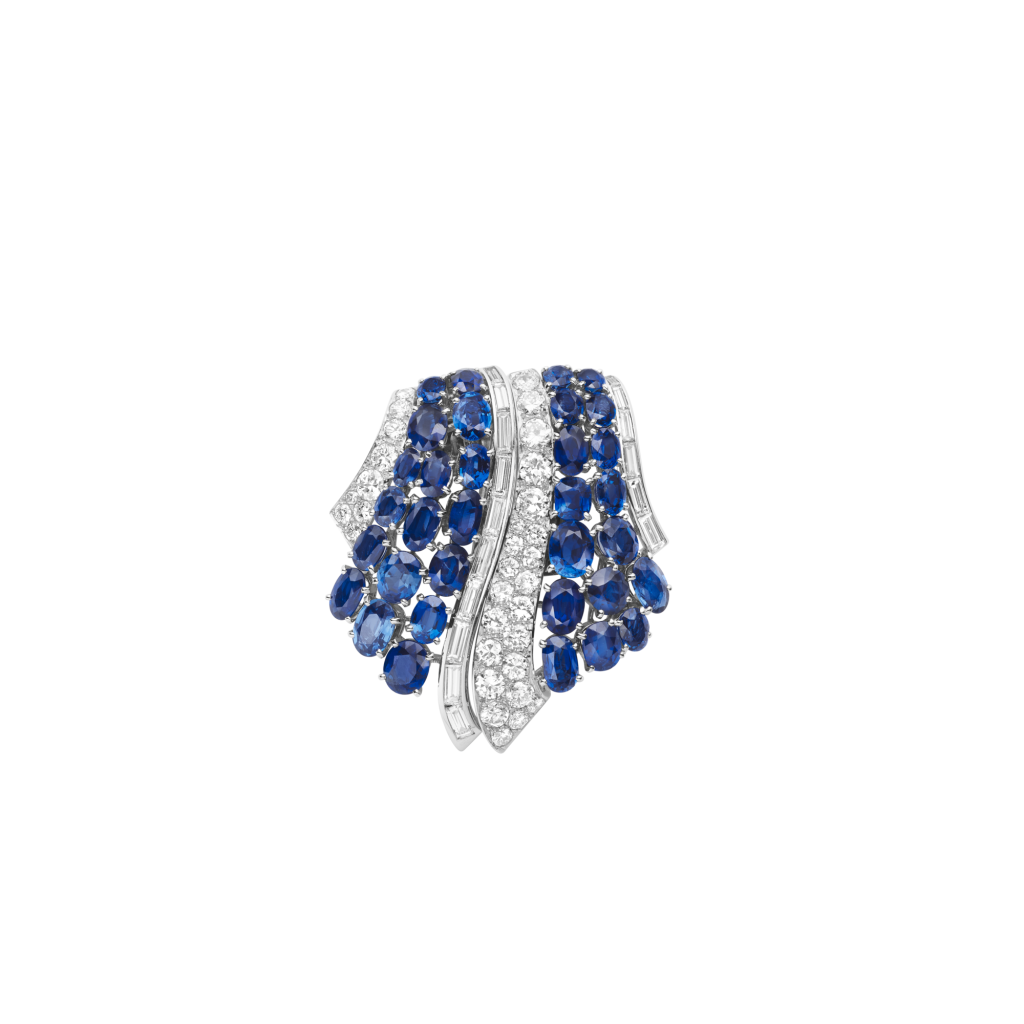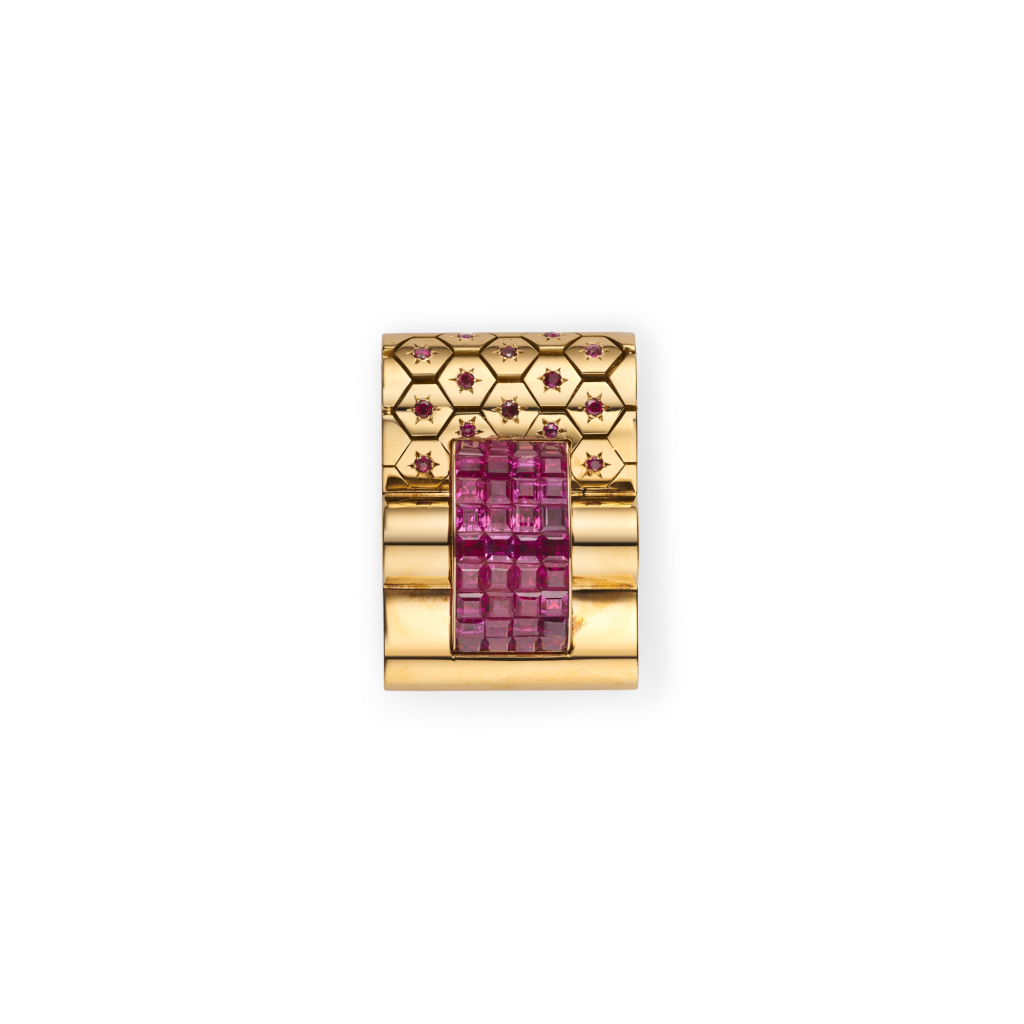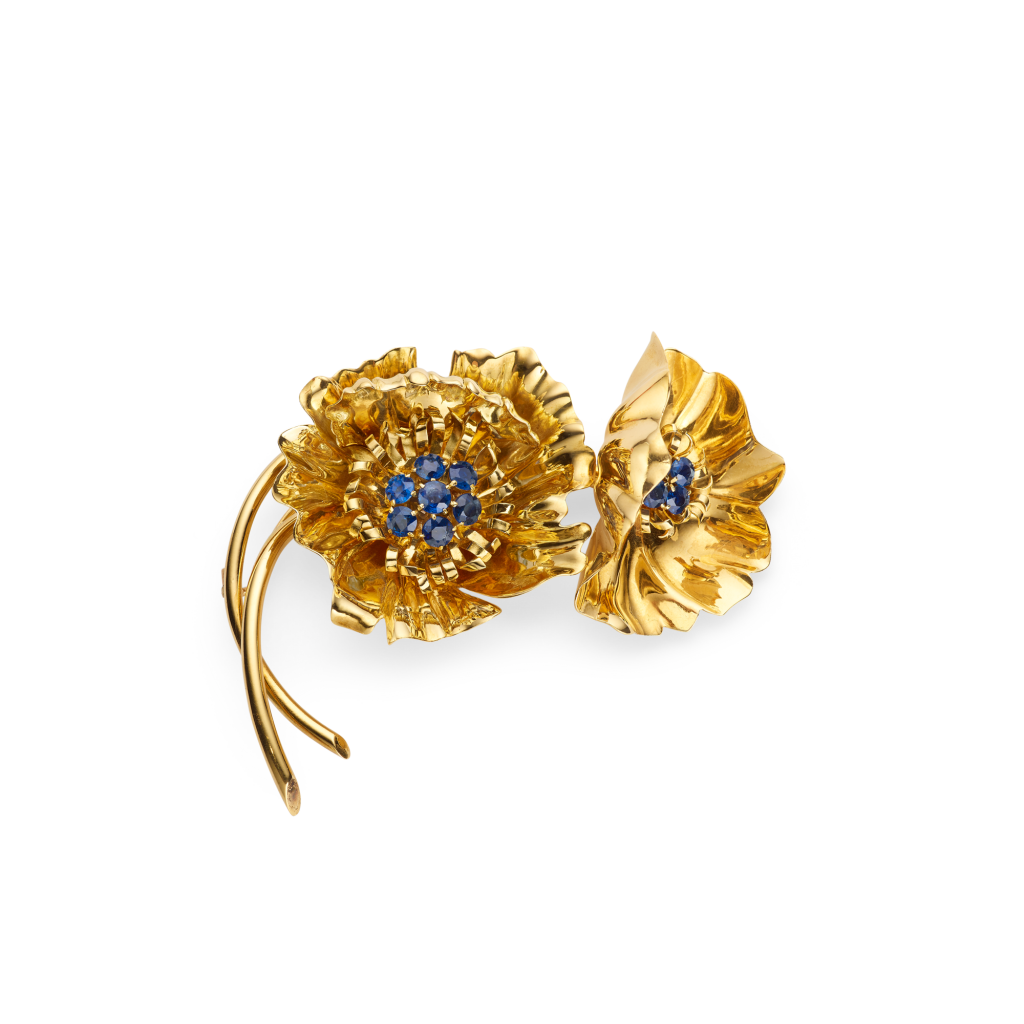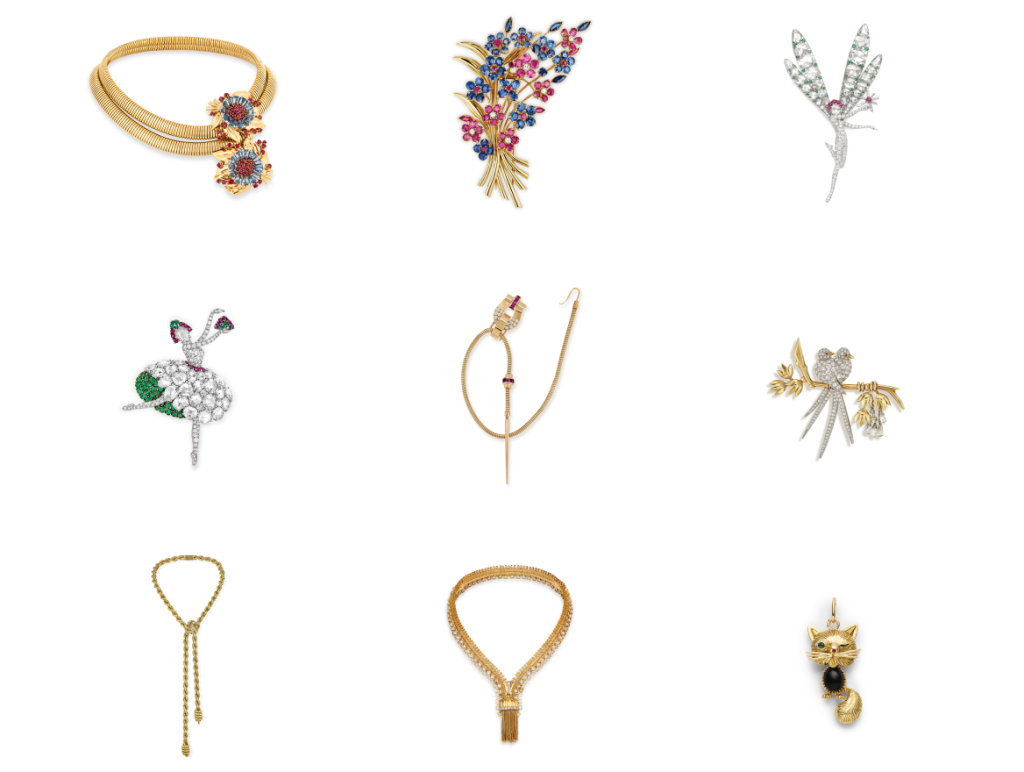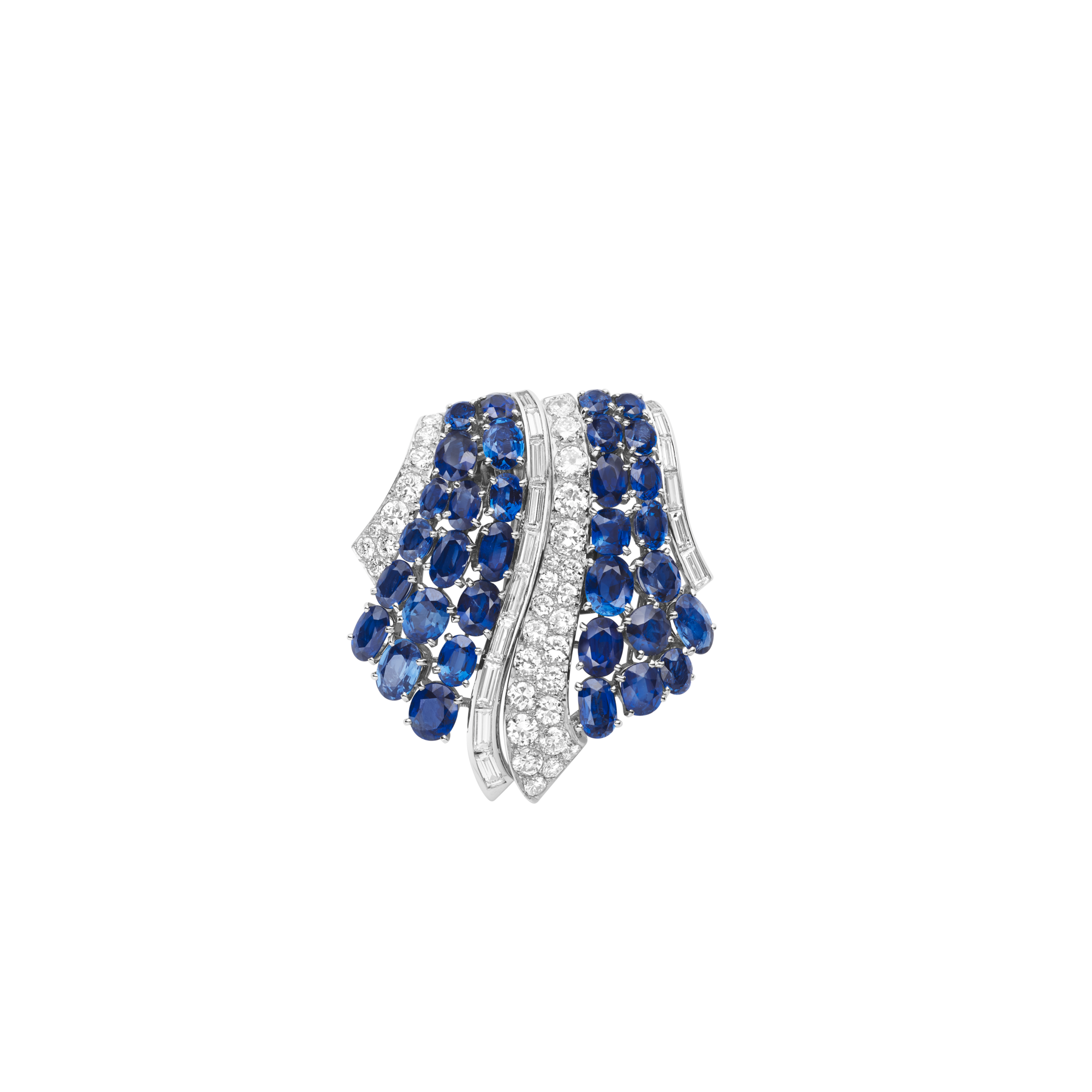
Double clip

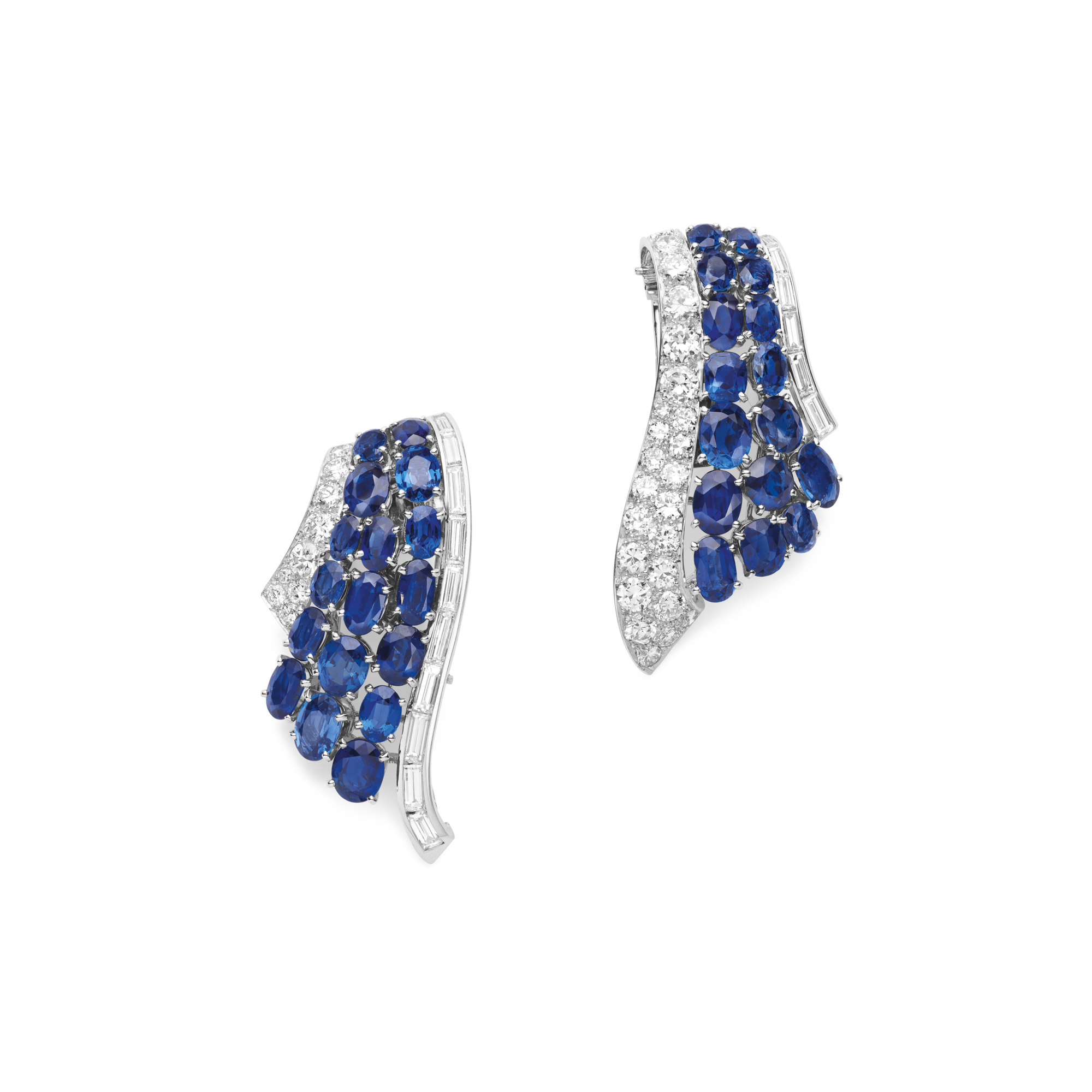
Creation details
- Creation year 1938
- Stone Diamond
- Stone Sapphire
- Material Gold
- Material Platinum
- Usage Clip
- Dimensions 45 × 40 mm
This piece exemplifies a type of jewelry characteristic of the 1930s: the double clip, with its semi-circular “entirely novel form”1Anonymous, “La parure, beauté de la femme,” Femina (January 1935): 26. reminiscent of a fan. It consists of two symmetrical parts that can be separated, thanks to an ingenious fastening system with a spring…
The two clips can be worn individually or joined together to form a single piece with their symmetrical design. The central part is emphasized by a double row of baguette-cut diamonds that transforms into four ribbons. These, in turn, wind their way up and over the top of the piece in a series of loops, beneath which a fan of calibrated oval rubies opens out. The gems are claw-set to form an openwork composition and do away with the mount, thus reinforcing the brilliance of the rubies.
L’alliance de la robe et du bijou
This double clip illustrates the “alliance of the dress and jewelry,”2Martine Renier, “Le charme de la parure, bijoux de Paris,” Femina (July 1934): 37. and in more than one way. The play of the clip’s stylized drapery and volutes echoes the “sculpted” dresses of the period designed by Madame Grès.3“I wanted to be a sculptor. For me, working fabric or stone is the same thing,” quote from Olivier Rometti and François Carrassan, Alix Grès. L’énigme d’un style [exhib. cat.] (Étampes: L’Or des îles, 1992), n.p. While the clips of the 1930s retain a degree of stylization typical of Art Deco from around the mid 1920s, they nonetheless forsake strict geometry for forms of more flexible outline.
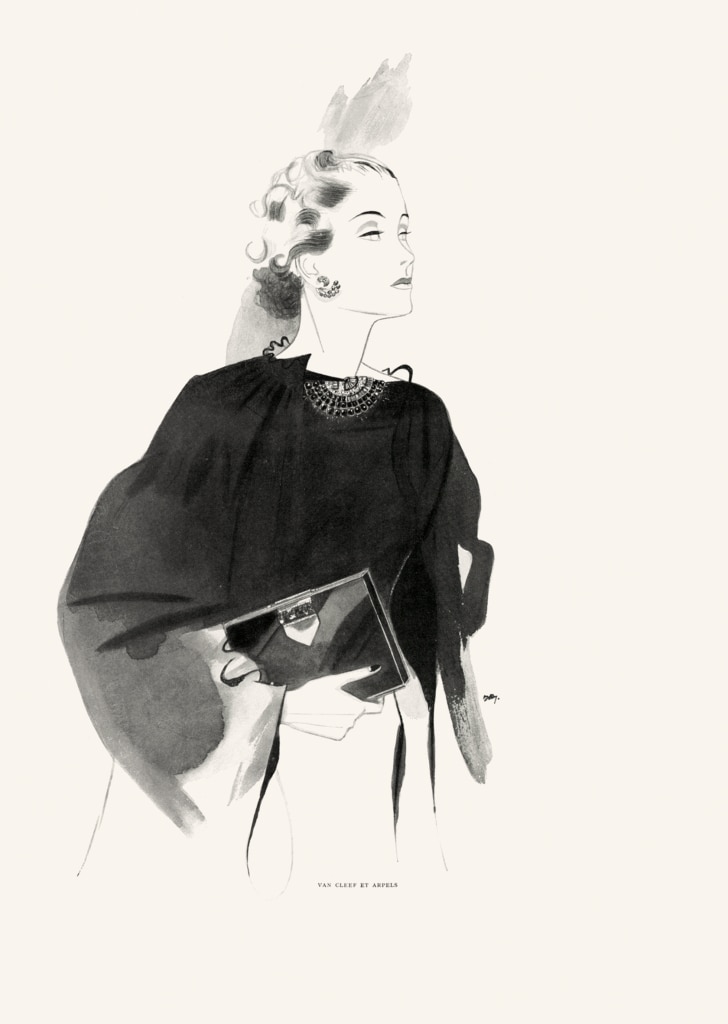
The taste for transformable jewels
While the sartorial arts and textiles provided an iconographic repertoire for jewelers, the latter in turn dreamed up jewelry “adapted to the form of dresses [that were] worn at the tips of an elongated collar [or] holding the ends of a belt in place.” Thus it was that “the low-cut neckline of a draped fabric brought the clip into being.”4Martine Renier, “Le charme de la parure, bijoux de Paris,” Femina (July 1934): 37. This jewelry creation went hand in hand with a growing interest in transformable pieces of jewelry in the 1930s. Transformable pieces of jewelry, notably clips, were practical as well as creating distinctive silhouettes, as the specialist press stated: “It appears that women of our time see in it the type of jewelry that is appropriate for our era.”5Femina (April 1934): 29.
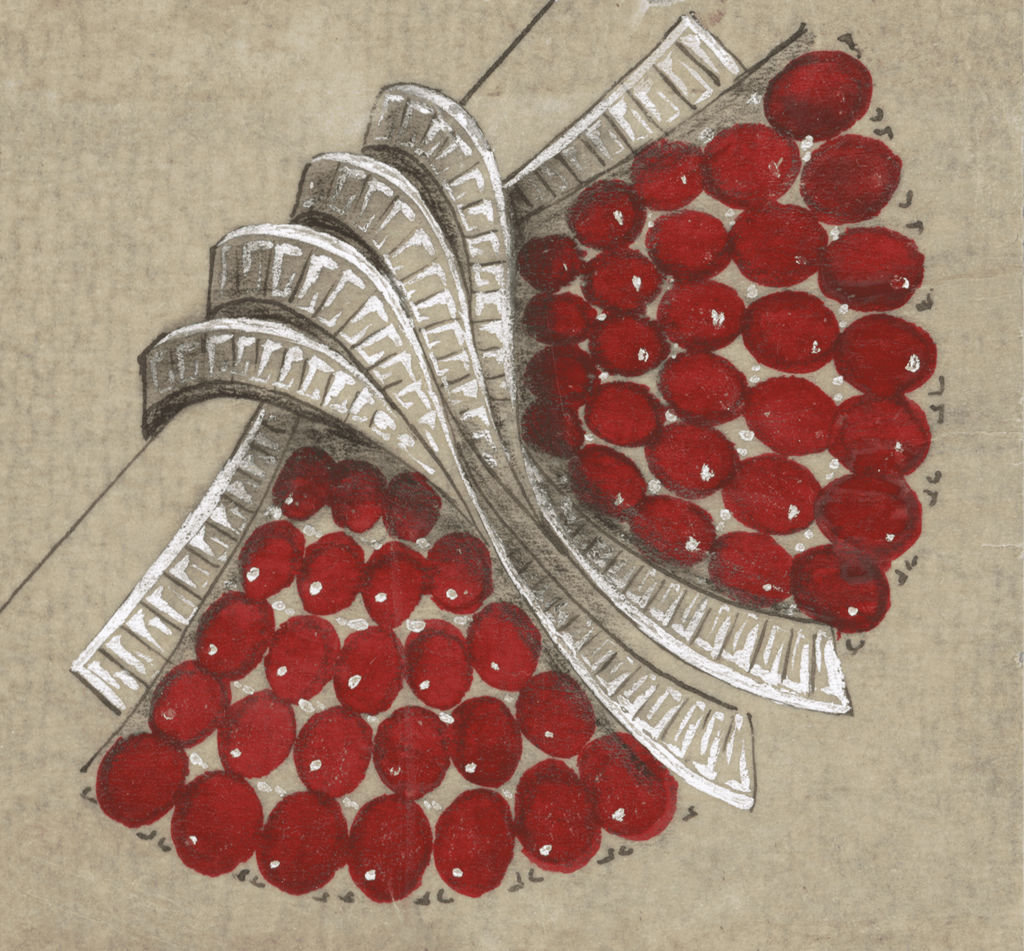
To go deeper
